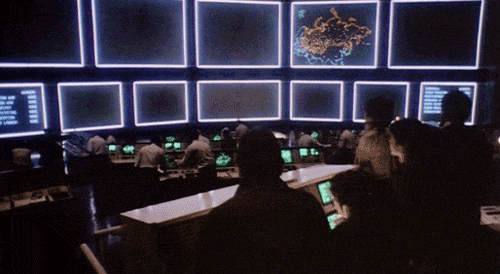Wargames and the 414s
‘Hacker’ used in mainstream media
The events leading to a nation-wide wake-up call took place in November 1979.1 A person “had mistakenly put military exercise tapes into the computer system” of the North American Air Defense Command (NORAD),2 which initiated an inadvertent injection of test scenario data “into the missile warning computers which generated false alerts”.3
That test scenario data simulated an all-out nuclear strike on United States mainland. The United States National Security Council was under the assumption that the Soviet Union had launched 220 missiles; a number that was later adjusted to 2.200 missiles.4 Close to the moment of requesting the President to decide on ordering a retaliatory strike, when “the Strategic Air Command was [already] launching its planes” a phone call was informed the National Security Council of NORAD’s error.5
The erroneous NORAD notification did not function as wake-up call however, though it did serve as the basis for the movie WarGames in 1983. The movie subsequently triggered “high school students from Milwaukee, inspired by WarGames and calling themselves the 414s” to prove that they could gain access to military networks.6 The 414s got nation-wide media attention, which resulted in the first use of ‘hacker’ in mainstream media and a year later in specific legislation in order to secure federal information systems.
1 Michael Warner, “Cybersecurity: A Pre-History,” Intelligence and National Security 27, no. 5 (2012), 781-799. p. 787.
2 Robert M. Gates, The Ultimate Insiders Story of Five Presidents and how they Won the Cold War (New York: Touchstone, 1996). p. 114.
3 United States General Accounting Office, NORAD’s Missile Warning System: What Went Wrong? (Washington: United States General Accounting Office, 1981). p. 13.
4 Gates, The Ultimate Insiders Story of Five Presidents. p. 114.
5 Gates, The Ultimate Insiders Story of Five Presidents. p. 114.
6 Michael Warner, “Cybersecurity: A Pre-History”. p. 787.


